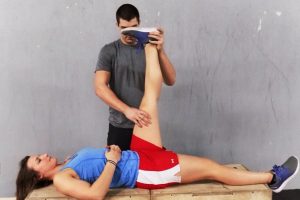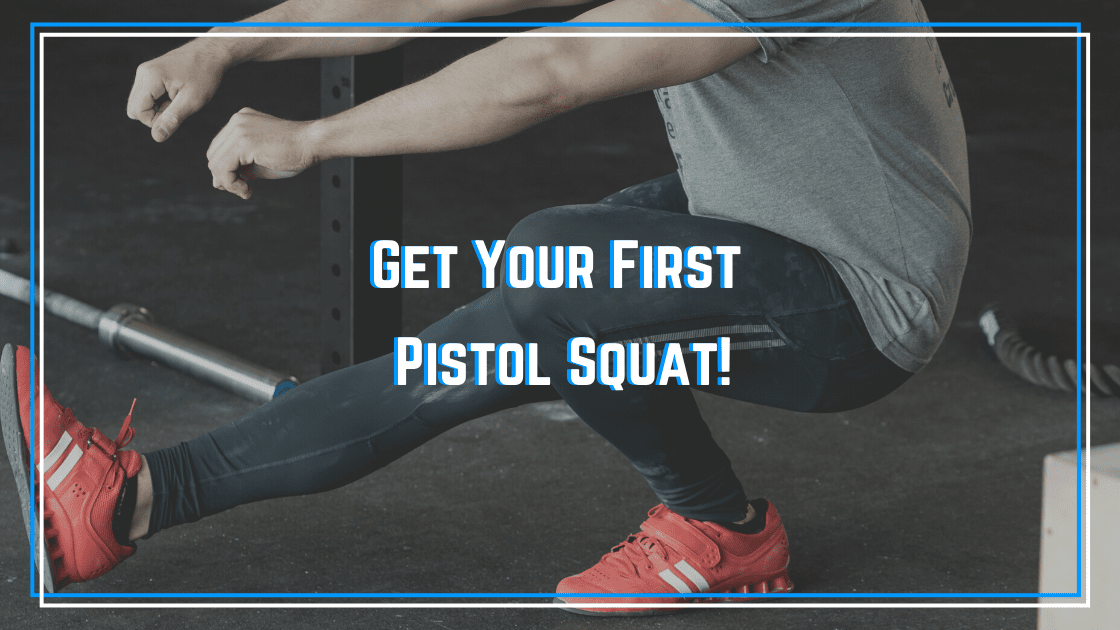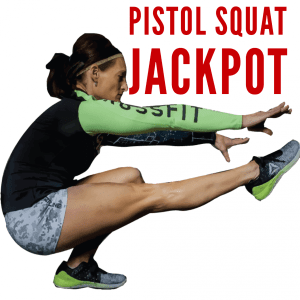The pistol squat is a challenging bodyweight strength exercise. It not only requires strength but significant control and mobility. Quite often the extreme mobility demands of the pistol squat are overlooked. So, we will start with the most commonly limited mobility deficits for the squat and then discuss a progression of strength exercises you can use to build up to a pistol squat!
If you need a done-for-you comprehensive plan to get your first pistol squat, be sure to check out our PISTOL SQUAT JACKPOT program! Hundreds of athletes have improved their pistol strength and technique with this program!
.
Mobility Demands to Get Your First Pistol Squat
Compared to a bilateral squat, the pistol squat will not allow for the legs to be positioned outside of the athlete’s center. But with the single-leg squat, the down leg will be positioned right under the athlete’s center of mass. So, this will increase the hip internal rotation mobility demands as shown in the video below.
View this post on Instagram
Assessing Hip Internal Rotation
When assessing hip internal rotation, I have an athlete sit up tall on a box and passively lift their leg outward. I like to see a 30-degree angle of hip internal rotation. Hip internal rotation is also important for the pistol squat because it is coupled with hip flexion. As IR is decreased, we will commonly see decreases in hip flexion.
When an athlete needs hip internal rotation mobility, I typically use drills from this article or the following stretch.
Assessing Ankle Mobility
Up next, we assess an athlete’s ankle mobility using this test. Ankle mobility must be excellent to be efficient with pistol squats. For those that don’t pass the below test, we will commonly see them have difficulty with depth or trouble keeping their heel flat during the pistol squat.
Need ankle mobility help? Our ANKLE MOBILITY OVERHAUL program has helped thousands of athletes improve their mobility to translate to better performance of movements such as the pistol squat.
Assessing Hamstring Flexibility
Finally, assessing an athlete’s hamstring length for the forward leg will decrease the difficulty in stabilizing the pelvis and holding the forward leg up. If tight, it will take considerable work for the hip flexors on that side to hold the leg up. You should be able to achieve an 80+ degree angle in this test:

This athlete has an 80-90 degree angle of her thigh relative to the ground indicating good flexibility of the hamstring muscles. Note the hand placement of the tester, maintaining the knee in full extension.
Some will argue that the athlete should strive to keep a neutral spine with the pistol squat. I disagree as there is no load on the spine. I don’t believe keeping an upright spine is necessary, and rounding forward will make it easier to balance for many athletes.
Pistol Squat Strength Progressions
Reverse Lunges
I like to start a reverse lunge progression to begin developing single-leg lower body strength and control. By decreasing the assistance of the back leg, as shown in the video, we increase the demand for the front leg. But, for this progression to work, you must emphasize putting as much weight forward as possible to replicate the loading pattern of a pistol squat. If you keep your weight back, you’ll get far less carryover to the pistol.
Box Pistols
While developing through this reverse lunge progression, I also like working on box pistols. Initially, the reverse lunges will be better for strength development when an athlete can’t control a box pistol squat to a low depth. But once their box pistol has progressed to where they can control down to a low box, this is the best option for further development.
It is very important with the box pistol squat to NOT SIT and to focusing on pushing knees and weight forward. Again this will better prepare you for a stand-alone pistol.
Counterbalanced Pistol
Once the athlete can perform a low box pistol, throw the box away. Then, use a light weight to help provide a counterbalance to help decrease the stability demands.







